![[DBPP]](pictures//asm_color_tiny.gif)





![[Search]](pictures//search_motif.gif)
Next: 5.6 Asynchronous Communication
Up: 5 Compositional C++
Previous: 5.4 Locality
CC++
does not provide low-level primitives for directly sending and
receiving data between threads. Instead, threads communicate by
operating on shared data structures. For example, one thread may
append items to a shared list structure, from which another thread
removes items; this implements a form of channel communication.
CC++
mechanisms can be used to implement a wide variety of such
communication structures.
In this section, we first explain how global pointers are used to
communicate data between processor objects. Then, we explain how sync
variables and atomic functions are used to provide synchronization and
mutual exclusion. Finally, we show how data transfer functions are
used to communicate more complex data structures.
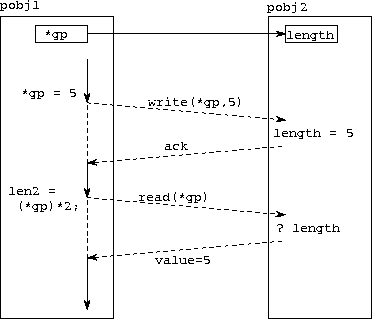
Figure 5.1: Remote read and write operations. At the top of the
figure, we show a global pointer gp located in processor object
pobj1 referencing an integer length in processor object
pobj2. The rest of the figure is a timeline depicting the
activity in these two processor objects as a thread in pobj1
first writes and then reads length. The thread in pobj1
is shown as a solid line when active and as a dashed line when
suspended waiting for a remote operation. The diagonal dashed lines
represent communications.
CC++
global pointers are used in the same way as C++
local pointers;
the only difference is that we use them to operate on data or to
invoke functions that may be located in other processor objects.
Hence, the following code fragment first assigns to and then reads
from the remote location referenced by the global pointer gp.
global int *gp;
int len2;
*gp = 5;
len2 = (*gp) * 2;
As illustrated in Figure 5.1, these read and write
operations result in communication.
If we invoke a member function of an object referenced by a global
pointer, we perform what is called a remote procedure call (RPC). An
RPC has the general form
<type> *global gp;
result = gp->p(...)
where gp is a global pointer of an arbitrary <type>,
p(...) is a call to a function defined in the object referenced by
that global pointer, and result is a variable that will be set
to the value returned by p(...). An RPC proceeds in
three stages:
-
The arguments to the function p(...) are packed into a message,
communicated to the remote processor object, and unpacked. The
calling thread suspends execution.
-
A new thread is created in the remote processor object to execute the
called function.
-
Upon termination of the remote function, the function return value is
transferred back to the calling thread, which resumes execution.
Basic integer types ( char, short, int, long,
and the unsigned variants of these), floats, doubles, and global
pointers can be transferred as RPC arguments or return values without
any user intervention. Structures, regular pointers, and arrays can
be transferred with the aid of transfer functions, to be discussed
later in this section.
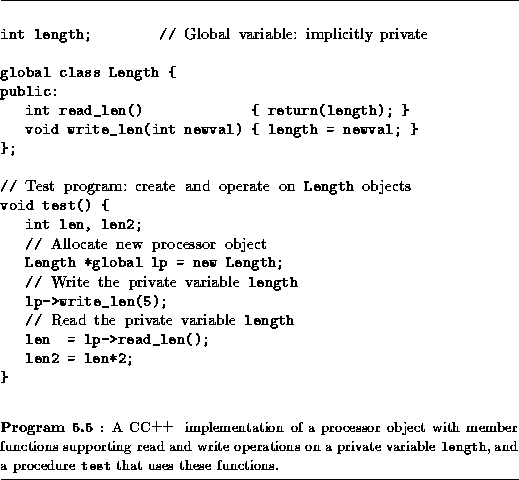
Program 5.5 uses RPCs to access a variable length
located in another processor object; contrast this with the code
fragment given at the beginning of this section, in which read and
write operations were used for the same purpose. The communication
that results is illustrated in Figure 5.2.
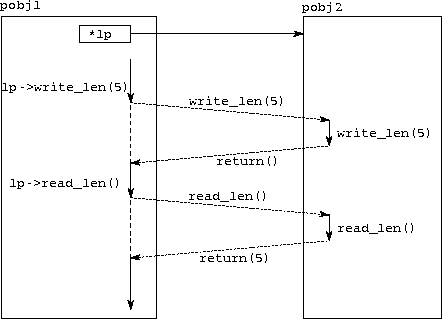
Figure 5.2: Using remote procedure calls to read and write a remote
variable. At the top of the figure, we show a global pointer lp
located in processor object pobj1 referencing processor object
pobj2. The rest of the figure is a timeline depicting the
activity in these two processor objects as a thread in pobj1
issues RPCs first to read and then to write the remote variable
length. The thread in pobj1 is shown as a vertical solid or
dashed line when active or suspended, waiting for a remote operation;
the diagonal dashed lines represent communications. The solid
vertical lines in pobj2 represent the threads created to execute
the remote procedure calls.

Figure 5.3: Alternative synchronization mechanisms. On the left, the
channel: a receiver blocks until a message is in the channel. On the
right, the sync variable: a receiver blocks until the variable
has a value.
A producer thread can use an RPC to move data to a processor object in
which a consumer thread is executing, hence effecting communication.
However, we also require a mechanism for synchronizing the execution
of these two threads, so that the consumer does not read the data
before it is communicated by the producer. In the task/channel model
of Part I, synchronization is achieved by making a consumer requiring
data from a channel block until a producer makes data available.
CC++
uses a different but analogous mechanism, the single
assignment or sync
variable (Figure 5.3). A
sync variable is identified by the type modifier sync, which
indicates that the variable has the following properties:
-
It initially has a special value, ``undefined.''
-
It can be assigned a value at most once, and once assigned is treated
as a constant (ANSI C and C++
const).
-
An attempt to read an undefined variable causes the thread that
performs the read to block until the variable is assigned a value.
We might think of a sync variable as an empty box with its interior
coated with glue; an object cannot be removed once it has been placed
inside.
Any regular C++
type can be declared sync, as can a
CC++
global pointer. Hence, we can write the following.
sync int i; // i is a sync integer
sync int *j; // j is a pointer to a sync integer
int *sync k; // k is a sync pointer to an integer
sync int *sync l; // l is a sync pointer to a sync integer
We use the following code fragment to illustrate the use of sync
variables. This code makes two concurrent RPCs to functions defined
in Program 5.5: one to read the variable length and
one to write that variable.
Length *global lp;
int val;
par {
val = lp->read_len();
lp->write_len(42);
}
What is the value of the variable val at the end of the parallel
block? Because the read and write operations are not synchronized,
the value is not known. If the read operation executes before the
write, val will have some arbitrary value. (The Length
class does not initialize the variable length.) If the
execution order is reversed, val will have the value 42.
This nondeterminism can be avoided by modifying
Program 5.5 to make the variable length a
sync variable. That is, we change its definition to the following.
sync int length;
Execution order now does not matter: if read_len executes
first, it will block until the variable length is assigned a
value by write_len.
Example  .
. Channel Communication:
Channel Communication:
Global pointers and sync variables can be used to implement a
variety of communication mechanisms. In this example, we use these
constructs to implement a simple shared queue class. This class can
be used to implement channel communication between two
concurrently executing producer and consumer tasks: we simply allocate
a queue object and provide both tasks with pointers to this object.
We shall see in Section 5.11 how this Queue class
can be encapsulated in the more convenient Channel class used in
Program 5.3.
Recall that a channel is a message queue to which a sender can append
a sequence of messages and from which a receiver can remove messages.
The only synchronization constraint is that the receiver blocks when
removing a message if the queue is empty. An obvious
CC++
representation of a message queue is as a linked list, in which each
entry contains a message plus a pointer to the next message.
Program 5.6 takes this approach, defining a Queue
class that maintains pointers to the head and tail of a message queue
represented as a list of IntQData structures. The data
structures manipulated by Program 5.6 are illustrated in
Figure 5.4.
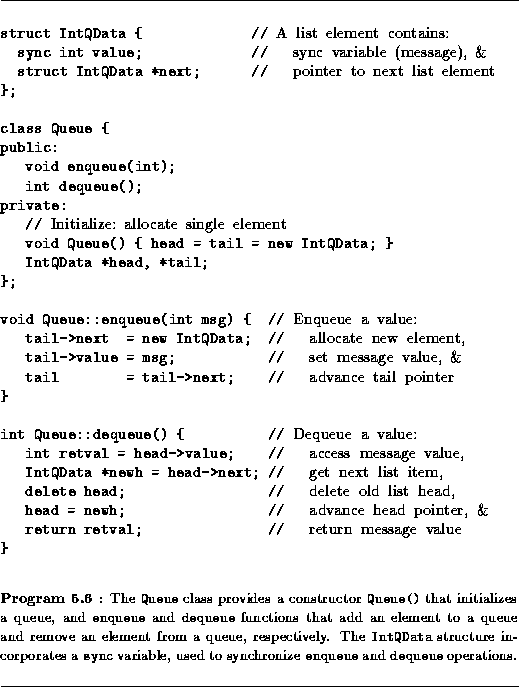
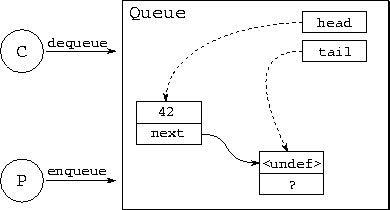
Figure 5.4: A message queue class, showing the internal representation
of a queue as a linked list of IntQData structures (two are
shown) with message values represented as sync values that are
either defined ( 42) or undefined ( <undef>). Producer and
consumer tasks execute enqueue and dequeue operations,
respectively.
The Queue class provides enqueue and dequeue
functions to add items to the tail of the queue and remove items from
the head, respectively. The sync variable contained in the
IntQData structure used to represent a linked list entry ensures
synchronization between the enqueue and dequeue
operations. The queue is initialized to be a single list element
containing an undefined variable as its message.
The first action performed by dequeue is to read the message
value associated with the first entry in the queue. This read
operation will block if the queue is empty, providing the necessary
synchronization. If the queue is not empty, the dequeue
function will read the queue value, delete the list element, and
advance the head pointer to the next list element. Similarly,
the enqueue function first allocates a new list element and
links it into the queue and then sets the msg field of the
current tail list element. Notice that the order in which these two
operations are performed is important. If performed in the opposite
order,
tail->value = msg;
tail->next = new IntQData;
then a dequeue function call blocked on the list element
tail->value and enabled by the assignment tail->value=msg could
read the pointer tail->next before it is set to reference a
newly created element.
The sync variable allows us to synchronize the transfer of data
from a producer to a consumer. In other situations, we may wish to
allow two threads to operate on the same nonsync data structure while
ensuring that they do not interfere with each other's execution. For
example, the enqueue and dequeue operations of
Example 5.3 allow a single sender and receiver to
communicate by enqueuing to and dequeuing from a shared queue. What
if we want multiple senders to be able to append messages to the same
queue? We cannot allow two producers to make concurrent calls to
enqueue, as an arbitrary interleaving of two enqueue calls
could have bizarre results. What we need is a mechanism to ensure
that only one message can be enqueued at a time.
This requirement is satisfied by CC++
's atomic keyword. Member
functions of an object can be declared atomic. This declaration
specifies that the execution of such a function will not be
interleaved with the execution of any other atomic function of the
same object. For example, to allow multiple producers to append to
the same queue, we would declare the enqueue function to be
atomic, as follows.
atomic void Queue::enqueue(int msg) {
tail->next = new IntQData;
tail->value = msg;
tail = tail->next;
}
This ensures that even if multiple producers attempt to append to the
same queue concurrently, the actual enqueue operations will
occur in some sequential order and a valid queue will be generated.
In C++
, declarations of the form
ostream& operator<<(ostream&, const TYPE& obj_in);
istream& operator>>(istream&, TYPE& obj_out);
in the class ios of the iostream library define infix
operators << and >>, which can be used to write and read
data of a specified TYPE to and from files. These operators are
predefined for simple types and can be provided by the programmer for
more complex types. This facility enhances modularity by allowing a
class definition to specify how its data structures should be read and
written. A program can then read and write instances of that class
without being aware of their internal structure.
CC++
uses an analogous mechanism for communicating data structures
between processor objects. Associated with every CC++
datatype is a
pair of data transfer functions
that define how to transfer
that type to another processor object. The function
CCVoid& operator<<(CCVoid&, const TYPE& obj_in);
defines how TYPE should be packaged for communication. It is
called automatically by the compiler whenever an object of TYPE
needs to be transferred to another processor object, that is, whenever
an RPC call takes an argument of that type or returns a value of that
type. Similarly, the function
CCVoid& operator>>(CCVoid&, TYPE& obj_out);
defines how TYPE should be unpackaged. It is called by the
compiler whenever an object of TYPE is received from another
processor object. Upon termination of this call, obj_out will
be a copy of the obj_in used as the argument to the operator
<< in the initial processor object.
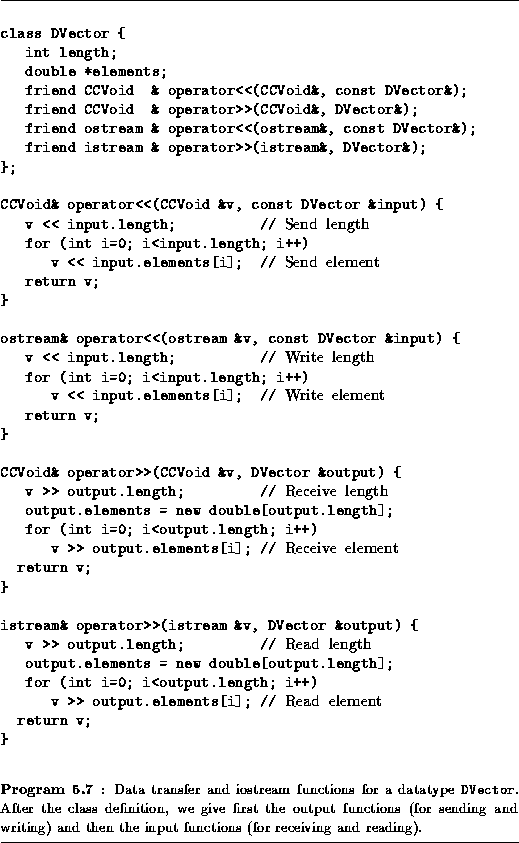

Figure 5.5: Using data transfer functions to communicate an instance
of the user-defined type DVector between two processor objects.
The global pointer gp is assumed to reference pobj2. The
function << is used to package the data structure at the source,
and the function >> is used to unpackage the data structure at
the destination.
The type CCVoid is a compiler-defined type analogous to the
types istream and ostream used in the iostream
library. Data transfer functions are generated automatically by the
CC++
compiler for simple data types, but must be constructed by the
programmer for local pointers, arrays, and structures that contain
local pointers. For example, Program 5.7 shows both data
transfer and iostream functions for a type DVector
comprising a vector of doubles. These functions send (write) the
vector length followed by the vector elements, and receive (read)
these values in the same order. (The C++
qualifier friend
names nonmember functions that can access a class's private
variables.) Having defined these data transfer functions, we can make
an RPC with a DVector as an argument, as follows; the vector
will be transferred correctly, as illustrated in
Figure 5.5.
DVector V;
V.elements = new double[2];
V.length = 2;
V.elements[0] = 42.0; V.elements[1] = 17.0;
gp->transfer(V);
![[DBPP]](pictures//asm_color_tiny.gif)





![[Search]](pictures//search_motif.gif)
Next: 5.6 Asynchronous Communication
Up: 5 Compositional C++
Previous: 5.4 Locality
© Copyright 1995 by Ian Foster

![[DBPP]](pictures//asm_color_tiny.gif)





![[Search]](pictures//search_motif.gif)



 .
. Channel Communication:
Channel Communication:



